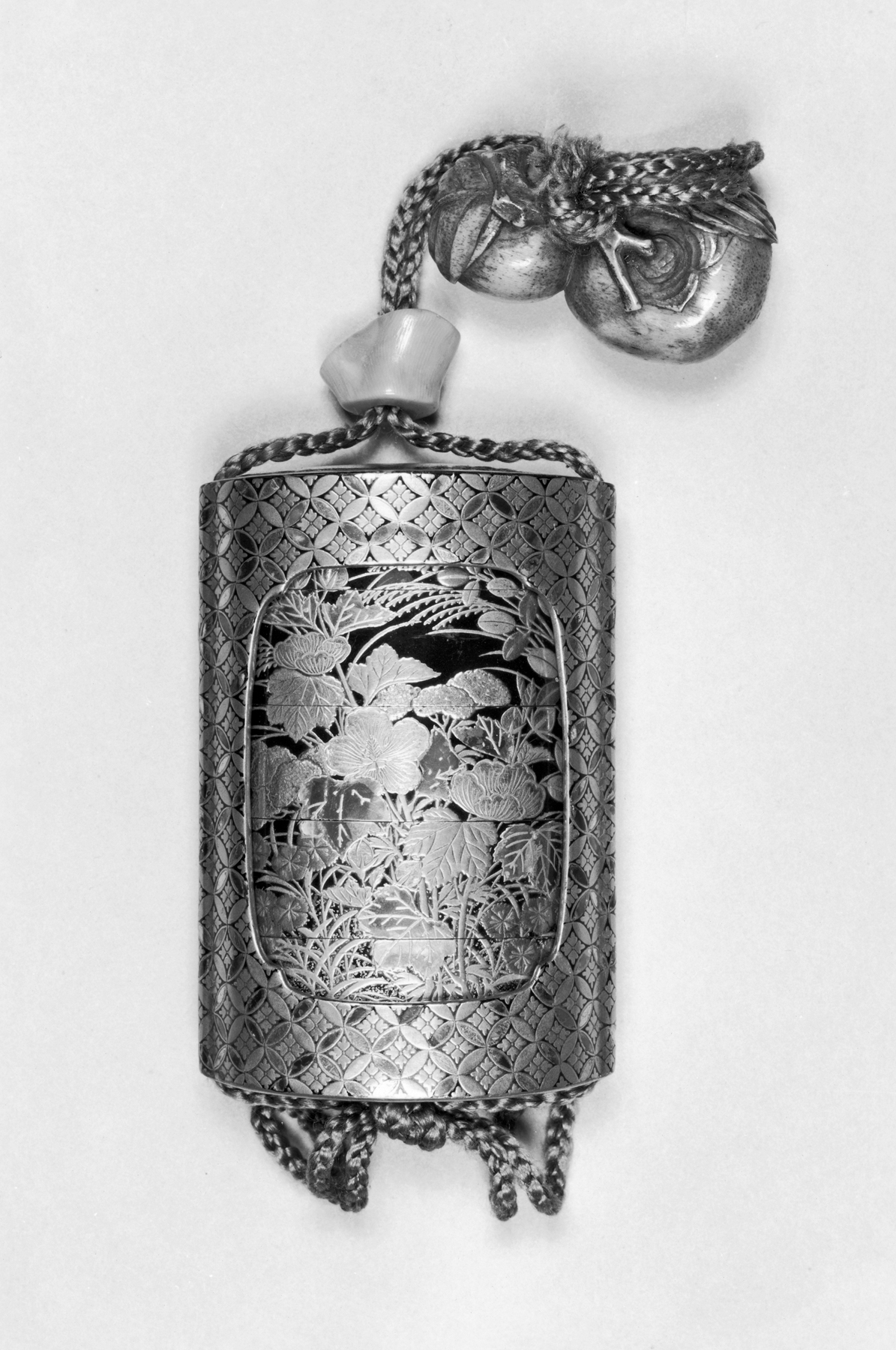Inro with Autumnal Grasses and Flowers, with Netsuke and Ojime
(Japan and Korea )
A saya standard (oblong) gold lacquer four compartment inro in a sheath. The sheath with a "hanabishi" pattern. Both sides of the compartments decorated with autumn flowers and grasses - Chinese bellflower ("kikyo"), chrysanthemum ("kiku"), pampass grass, yarrow, hibiscus, and bush-clover ("hagi"). The sheath ("saya") in gold with an inlay of aogai. A background of "roiro" in black for the upper compartments and "nashiji" for the lower. The interior with "nashiji" and "fundame." The cord channels are external with an ojime (button) of coral branch. Together with a carved ivory netsuke of two persimmons ("kaki") with an inscription on the bottom.
Inscription
Provenance
Provenance (from the French provenir, 'to come from/forth') is the chronology of the ownership, custody, or location of a historical object. Learn more about provenance at the Walters.
Exposition Universelle, Paris, 1878; William T. Walters, Baltimore, 1878, by purchase; Henry Walters, Baltimore, 1894, by inheritance; Walters Art Museum, 1931, by bequest.
Exhibitions
| 1984 | Japanese Lacquers. The Walters Art Gallery, Baltimore. |
| 1878 | Exposition Universelle. Paris. |
Geographies
Japan (Place of Origin)
Measurements
inro: 2 15/16 x 1 15/16 x 1 in. (7.4 x 5 x 2.5 cm)
Credit Line
Acquired by William T. Walters, 1878
Location in Museum
Not on view
Accession Number
In libraries, galleries, museums, and archives, an accession number is a unique identifier assigned to each object in the collection.
In libraries, galleries, museums, and archives, an accession number is a unique identifier assigned to each object in the collection.
67.423


